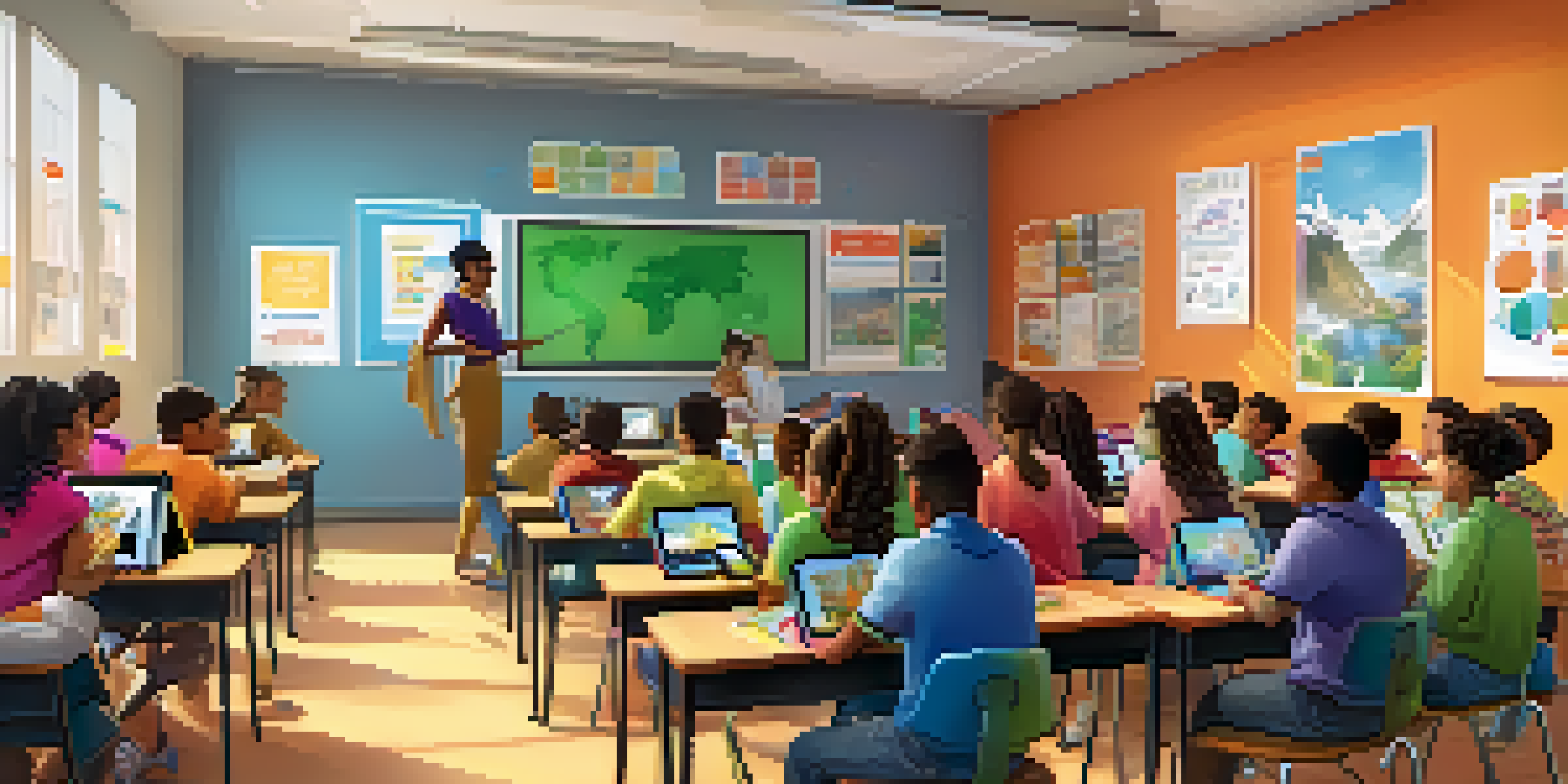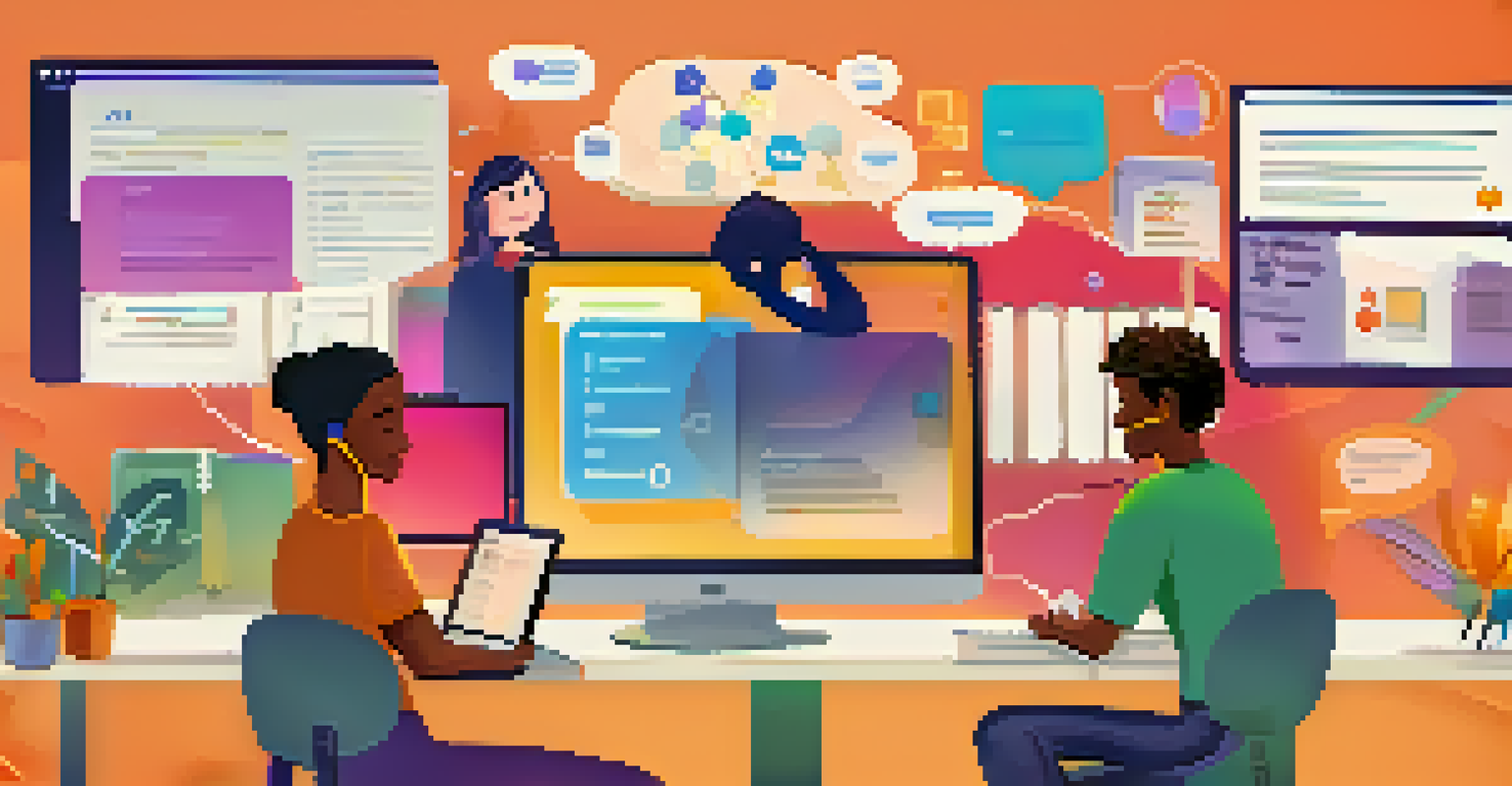The Role of Collaboration in Gamified Learning Environments

Understanding Gamified Learning Environments
Gamified learning environments use game elements to enhance education. These can include points, badges, and leaderboards that motivate students. By integrating game mechanics, learners often become more engaged and willing to participate.
Collaboration allows students to voice their opinions and actively engage in their learning process.
In these settings, the focus shifts from traditional teaching methods to interactive experiences. This shift is crucial in capturing the attention of today’s digital natives, who thrive on instant feedback and rewards. The gamification of learning creates a dynamic atmosphere where students can explore and experiment.
Ultimately, gamified environments pave the way for collaborative learning. When students work together towards common goals, they not only build on their knowledge but also develop essential social skills. This foundational understanding sets the stage for deeper collaborative efforts.
The Importance of Collaboration in Learning
Collaboration is a cornerstone of effective learning, especially in gamified environments. When students collaborate, they share diverse perspectives, fostering creativity and critical thinking. This interaction can significantly enhance problem-solving skills as learners tackle challenges together.

Moreover, collaborative learning can lead to improved retention of information. Studies show that discussing and teaching concepts to peers solidifies understanding better than solitary study. As students communicate their ideas, they also refine their reasoning and articulation skills.
Gamification Boosts Student Engagement
By incorporating game elements like points and badges, gamified learning environments enhance student motivation and participation.
In gamified settings, collaboration often manifests through team-based challenges and group projects. These opportunities not only promote social interaction but also create a sense of community. This connectedness can increase motivation and enjoyment, making learning a more fulfilling experience.
How Gamification Fosters Collaborative Skills
Gamification naturally encourages collaboration by incorporating team-oriented tasks. In these scenarios, students must rely on each other’s strengths to succeed, fostering a sense of trust and interdependence. This teamwork is essential for developing leadership and communication skills.
Gamification is not about games; it's about engaging the learner in a way that is meaningful and enjoyable.
Additionally, gamified elements such as shared goals and rewards can enhance cooperation. When students work towards a common objective, they are more likely to collaborate effectively. This shared focus not only strengthens their bonds but also enhances their learning outcomes.
As participants navigate challenges together, they learn to negotiate and compromise, vital skills for any collaborative effort. These experiences within gamification create a safe environment for students to experiment with roles and responsibilities, preparing them for real-world teamwork.
Technological Tools that Enhance Collaboration
In today’s digital age, technology plays a pivotal role in facilitating collaboration in gamified learning. Tools like online discussion boards, collaborative platforms, and game-based applications allow students to connect, regardless of their physical location. This flexibility promotes inclusivity and diverse participation.
For instance, platforms such as Google Classroom or Microsoft Teams enable real-time collaboration on projects. Students can share resources, brainstorm ideas, and provide feedback seamlessly. This not only streamlines the learning process but also strengthens students’ familiarity with digital tools.
Collaboration Enhances Learning Outcomes
Working together in gamified settings fosters creativity, critical thinking, and better retention of information among students.
Moreover, incorporating technology can enhance engagement through interactive elements. For example, virtual escape rooms or multiplayer games create exciting environments where collaboration is essential. These experiences not only make learning enjoyable but also prepare students for future collaborative endeavors in their careers.
Challenges of Collaboration in Gamified Learning
While collaboration in gamified learning offers numerous benefits, it also comes with challenges. One common issue is the unequal participation among students. Some might dominate discussions or tasks, leaving others feeling sidelined, which can hinder the collaborative spirit.
Additionally, conflicts may arise when team members have differing opinions or approaches. Navigating these disagreements is crucial for maintaining a positive group dynamic. Educators must encourage open communication and conflict resolution strategies to ensure all voices are heard.
Finally, balancing competition and collaboration can be tricky in gamified settings. While competition can motivate, it might also lead to unhealthy rivalries. Teachers need to create a supportive atmosphere where collaboration is valued as much as individual achievement.
Best Practices for Fostering Collaboration
To maximize collaboration in gamified environments, educators should establish clear expectations. Outlining roles, responsibilities, and goals helps keep everyone on track and engaged. This clarity reduces confusion and encourages accountability among team members.
Incorporating diverse group activities can also enhance collaboration. Mixing up teams regularly allows students to work with various peers, broadening their perspectives. This exposure not only enriches their learning experience but also strengthens their adaptability.
Technology Facilitates Collaborative Learning
Digital tools and platforms enable seamless collaboration, making it easier for students to connect and engage in group projects.
Finally, providing constructive feedback is essential. Educators should encourage peer evaluations and reflections after group activities. This feedback loop helps students recognize their strengths and areas for improvement, fostering a culture of continuous learning and collaboration.
The Future of Gamified Collaborative Learning
As education continues to evolve, the integration of gamification and collaboration will likely grow. Advances in technology, such as virtual and augmented reality, could create even more immersive learning experiences. These innovations promise to enhance collaboration in ways we can only imagine today.
Moreover, the emphasis on soft skills like teamwork and communication in the workplace will drive the importance of collaborative learning. Future educational frameworks may prioritize these elements, integrating them into gamified curricula to better prepare students for their careers.

Ultimately, the role of collaboration in gamified learning environments is crucial for fostering engaged, skilled, and adaptable learners. As we move forward, embracing these collaborative practices will help shape a more effective and enjoyable learning journey for all students.